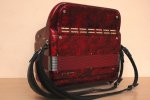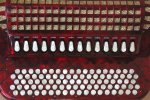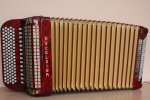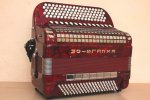Can anyone please help identify the year/value of this Excelsior 922? It claims to be LMMM with double tone chamber? Thought the musette ones don't have tone chambers because the chambers defeat the musette sound. Is this right? What can be a fair price for this? Looks sharp in the photos. I have an Excelsior model 610 CBA LMMM without the chambers. I like the clean sound of the 610 and the nimble buttons, feel just right to me. The weight and shape of the `610 is also excellent. Just the sound feels missing the weight somehow. Will this 922 be a big step up from the 610 sound quality wise? Could the 922 with the chambers add more body to its sound? I asked the seller for video clips but not sure how much that will help (who's testing it how thoroughly with what recording device, etc). I checked on the web. The 922 is supposed to be Excelsior's pro model. But only with 49 notes and without palm switch are kinda disappointing. The seller is in Bulgaria with pretty good reputation. Anyone has experience buying from east Europa on eBay before and how was it? Apologize for getting a little bit off the topic. Thank you in advance for your valuable opinions and advices. :ch
P.S. My Model 610 is missing the white plastic cover on the treble musette switch that looks just like those on this 922 in the photos. If you have one to spare, please let me know. Thanks again!
P.S. My Model 610 is missing the white plastic cover on the treble musette switch that looks just like those on this 922 in the photos. If you have one to spare, please let me know. Thanks again!




